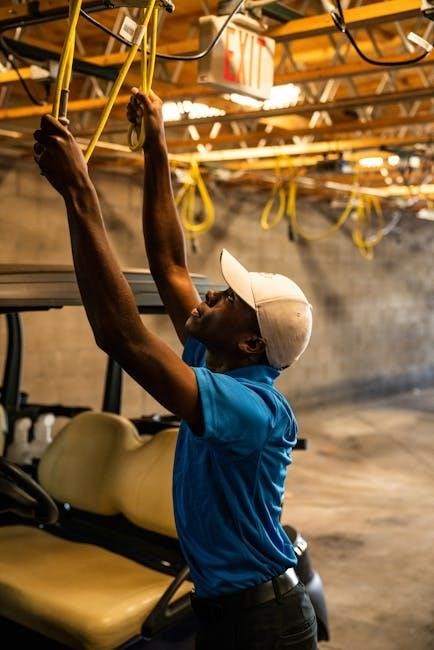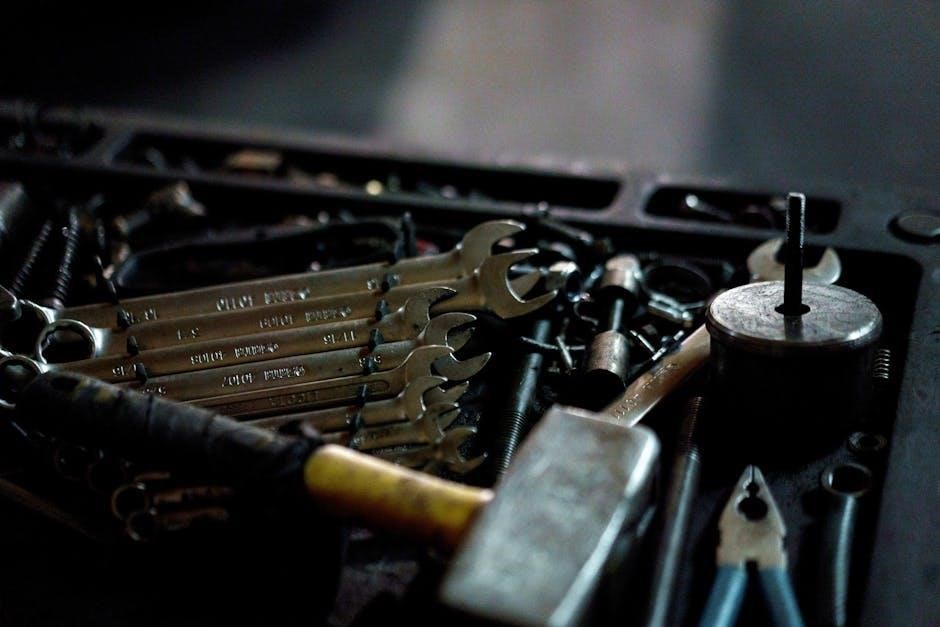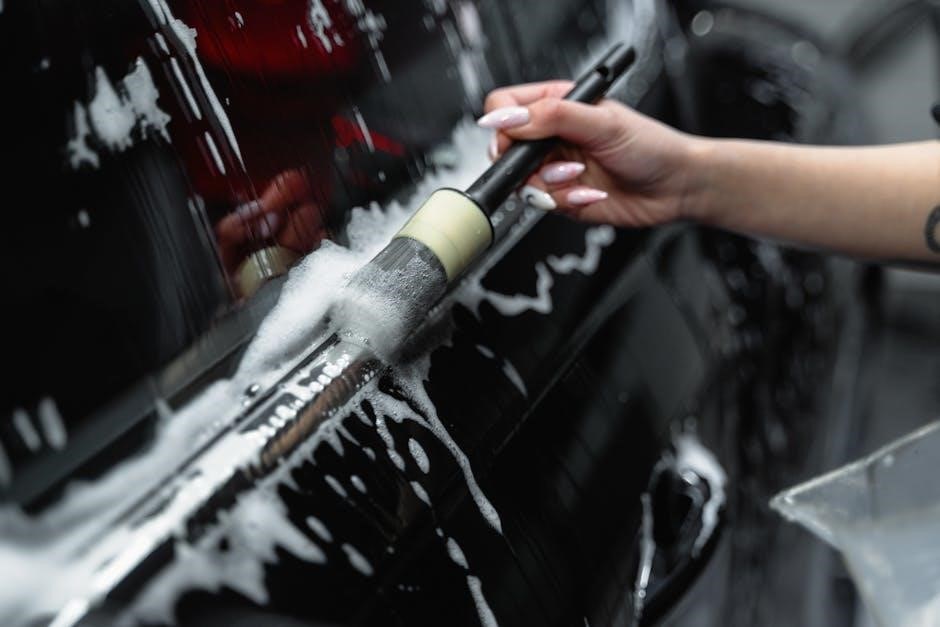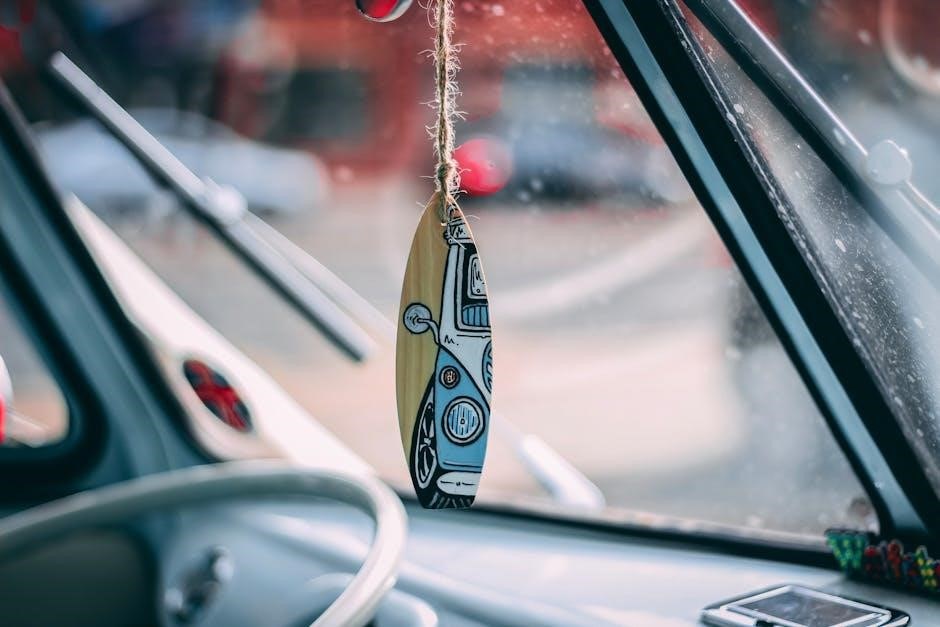Converting an automatic vehicle to a manual transmission, known as manualizing, is a complex process that involves replacing key components. While it offers better control and driving engagement, the cost and technical challenges are significant, often outweighing the benefits for many drivers.

Feasibility of Converting to Manual Transmission
Converting an automatic to a manual transmission is feasible but often costly and technically demanding. It requires replacing critical components like the clutch, flywheel, and shift assembly. While possible, it may be more practical to trade in for a manual vehicle.
Cost Considerations
Converting an automatic transmission to a manual transmission is a costly endeavor that often exceeds the value of trading in the vehicle for a manual counterpart. The process requires purchasing a new manual transmission, clutch, flywheel, and shift assembly, which can be expensive. Additionally, labor costs for a professional mechanic or transmission specialist are significant, as the job is highly technical. Other components, such as transmission mounts, linkages, and pedals, must also be replaced or modified, further increasing expenses. While some enthusiasts may find the cost justified for the improved driving experience, others may find it more practical to purchase a vehicle that already has a manual transmission. The financial investment required makes this conversion a decision that should be carefully weighed against alternative options.

Technical Challenges

Converting an automatic transmission to a manual transmission presents numerous technical challenges that make it a complex and difficult process. One of the primary issues is the fundamental difference in design between automatic and manual transmissions. Automatic transmissions rely on hydraulic systems, torque converters, and planetary gears, which are not compatible with manual components like the clutch and gearshift. Installing a manual transmission requires significant modifications to the vehicle’s drivetrain, including the replacement of the flywheel, clutch assembly, and gear linkages. Additionally, the vehicle’s computer system, particularly the ECU, may need reprogramming to accommodate the manual transmission, as modern automatic transmissions often rely on electronic controls. The process also involves mechanical adjustments to the pedals, as the clutch pedal must be integrated into the existing brake and accelerator setup. These technical complexities make the conversion a task that is best left to experienced professionals, as improper installation can lead to serious mechanical failures and safety hazards. The difficulty of the process is further compounded by the need for specialized tools and expertise, making it a daunting project for even skilled DIY enthusiasts.
Steps to Convert Automatic to Manual Transmission
Converting an automatic to a manual transmission involves several key steps. Start by removing the driver seat and pedals to access the transmission area. Next, drill holes for the clutch pedal and install the new manual pedals. Finally, replace the automatic transmission with a manual one, ensuring all components are properly aligned and connected. This process requires precision and mechanical expertise to ensure proper functionality and safety.
Step 1: Remove the Driver Seat
Removing the driver seat is the first step in converting an automatic transmission to a manual one. This allows easy access to the pedals and transmission area. Start by disconnecting the battery to prevent any accidental electrical issues. Locate the bolts or clips securing the seat to the floor. Use a wrench or screwdriver to remove these fasteners. Gently pull the seat forward while disconnecting any wiring harnesses connected to the seat controls. Once free, carefully lift the seat out of the vehicle. This step is crucial for accessing the pedals and transmission components. Ensure all electrical connections are safely disconnected to avoid damage or short circuits. After removing the seat, you’ll have clear access to the pedals and transmission area, making the next steps in the conversion process more manageable. Properly store the seat to avoid damage during the conversion process.
Step 2: Remove the Pedals
After removing the driver seat, the next step is to take out the pedals. Start by disconnecting the battery to ensure no electrical components are active. Locate the pedals, including the brake and accelerator, which are typically held in place by bolts or clips. Use a wrench or screwdriver to remove these fasteners. Gently pull the pedals forward while being careful not to damage the connecting rods or wiring. Some vehicles may have additional brackets or linkages that need to be removed as well. Once the pedals are free, set them aside for later reinstallation or replacement. This step provides access to the transmission area and prepares the vehicle for the installation of the manual transmission components. Be sure to label any wiring or connections for easier reinstallation later. Removing the pedals is a critical step that allows you to proceed with the conversion process smoothly. Ensure all components are handled with care to avoid damage. This step sets the stage for drilling holes for the clutch pedal in the next phase.
Step 3: Drill Holes for the Clutch Pedal
Drilling holes for the clutch pedal is a critical step in the manual transmission conversion process. Begin by locating the appropriate position for the clutch pedal assembly, ensuring it aligns with the driver’s seating position for optimal comfort and functionality. Use a measuring tape or template to mark the exact spot where the pedal will be installed. Once marked, use a drill press or hand drill to create holes for the mounting bolts. The size of the drill bit should match the bolts provided with the clutch pedal kit. Be precise to avoid misalignment, as this could lead to improper pedal installation and affect the overall performance of the clutch system. After drilling, clean the area to remove any debris. If necessary, install any additional brackets or reinforcements to secure the pedal assembly firmly. This step requires careful attention to detail to ensure the clutch pedal operates smoothly and reliably. Proper alignment and secure mounting are essential for safe and effective driving. Always double-check your measurements and consider consulting a professional if unsure about the process.
Step 4: Fit the New Pedals
Fitting the new pedals is a straightforward yet crucial step in the manual transmission conversion process. Once the holes for the clutch pedal have been drilled, carefully align the new clutch and brake pedal assembly with the mounting points. Ensure the pedals are properly seated and aligned to match the driver’s foot position for comfort and functionality. Use the bolts provided with the pedal kit to secure the assembly, tightening them in a star pattern to avoid misalignment. Tighten the bolts to the manufacturer’s specified torque to prevent damage to the mounting points. After installing the pedals, adjust the clutch pedal’s height and free play according to the vehicle’s specifications for optimal feel and performance. Double-check the linkage to ensure it connects smoothly to the clutch master cylinder. Finally, test the pedals to confirm proper operation and make any necessary adjustments. This step ensures the driver has full control over the clutch and brake systems, which are essential for smooth manual transmission operation.

Step 5: Install the Manual Transmission
Installing the manual transmission is the most critical and technically demanding part of the conversion. Begin by removing the automatic transmission, ensuring all electrical and hydraulic connections are disconnected. Carefully lower the manual transmission into place, aligning it with the engine’s bellhousing. Secure the transmission using the provided bolts, tightening them evenly to avoid warping the mounting surface. Reattach the driveshaft, ensuring it is properly aligned and secured. Next, install the new clutch and flywheel, making sure they are perfectly centered and aligned with the crankshaft. Connect the clutch master cylinder to the pedal assembly, bleeding the system to remove any air bubbles. Finally, reinstall the gearshift assembly, ensuring it is securely fastened and properly aligned with the transmission. Test the transmission by shifting through all gears to confirm smooth operation. This step requires precision and mechanical expertise, as improper installation can lead to transmission failure or unsafe driving conditions. If unsure, consult a professional mechanic or transmission specialist to ensure the job is done correctly. Proper installation is vital for both performance and safety.
Converting an automatic transmission to a manual is a complex and demanding process that requires significant mechanical expertise and financial investment. While it can be rewarding for enthusiasts seeking greater control over their vehicle, it is not a project for the faint of heart. The technical challenges, high costs, and potential risks of improper installation make it a decision that should not be taken lightly. For most drivers, the convenience and ease of automatic transmissions outweigh the benefits of a manual swap. However, for those determined to pursue this conversion, thorough research, specialized tools, and often professional assistance are essential. Ultimately, the satisfaction of driving a manually shifted vehicle must be weighed against the time, effort, and resources required to achieve it. Many experts recommend considering the purchase of a vehicle already equipped with a manual transmission as a more practical and cost-effective alternative.

